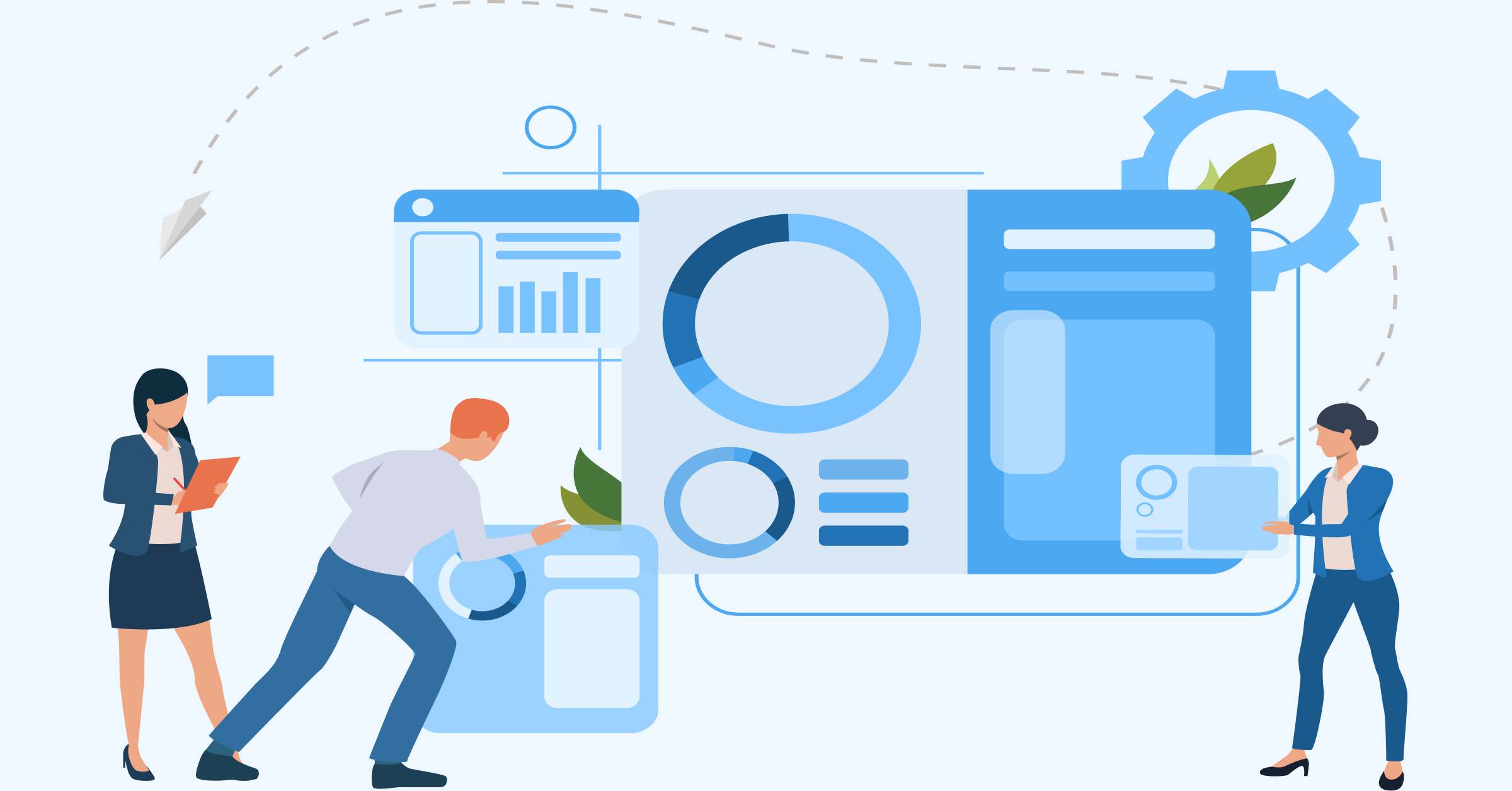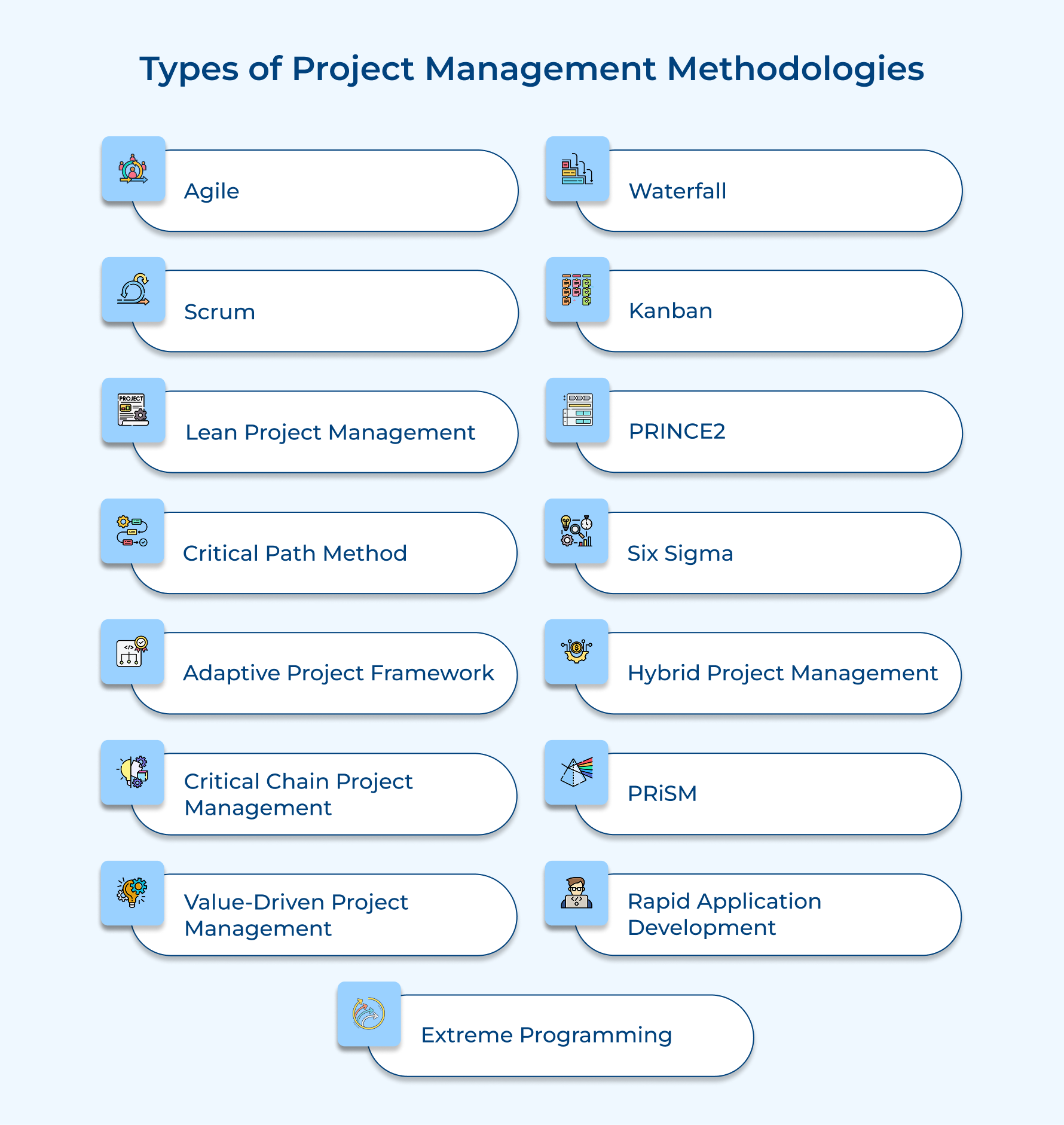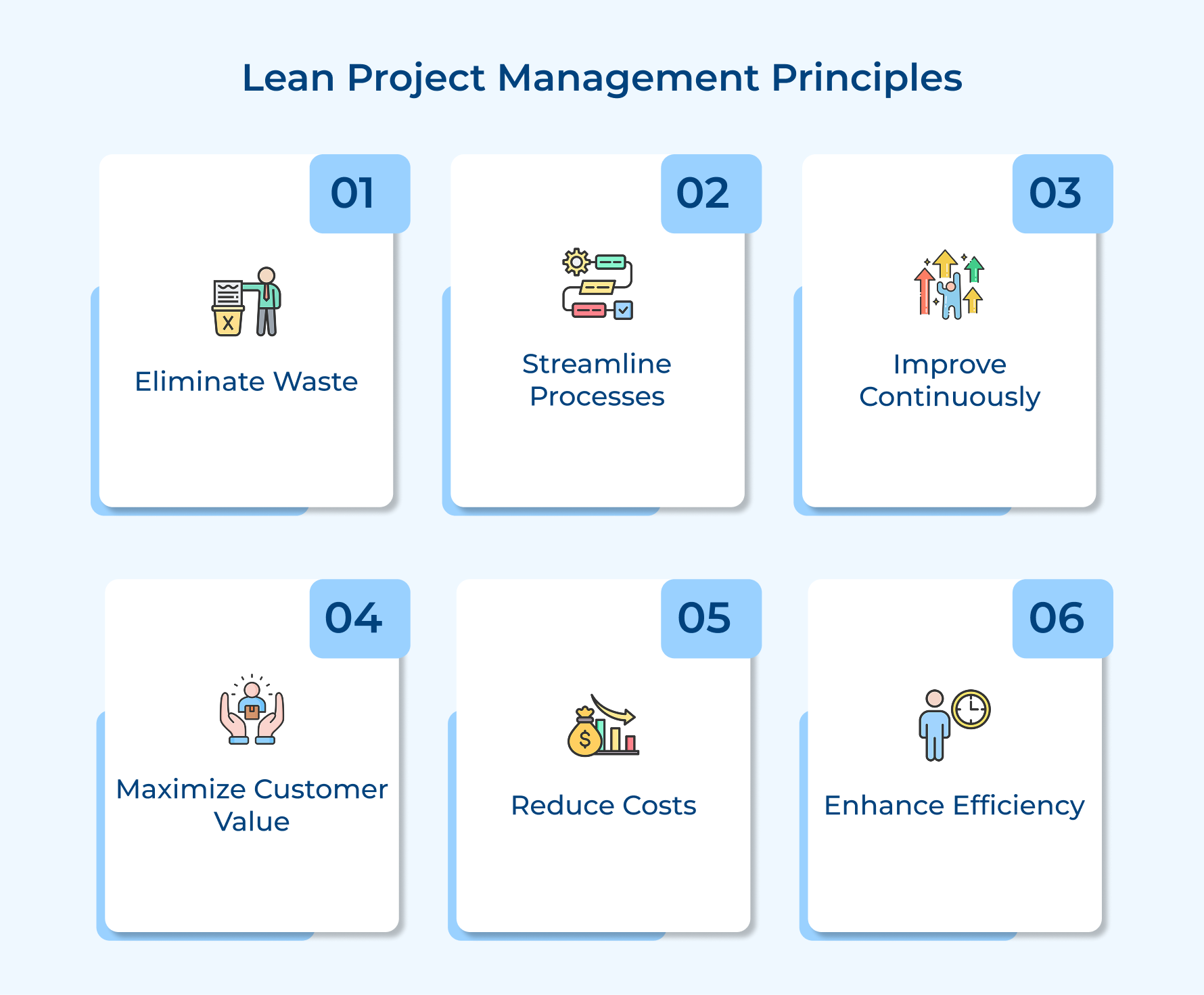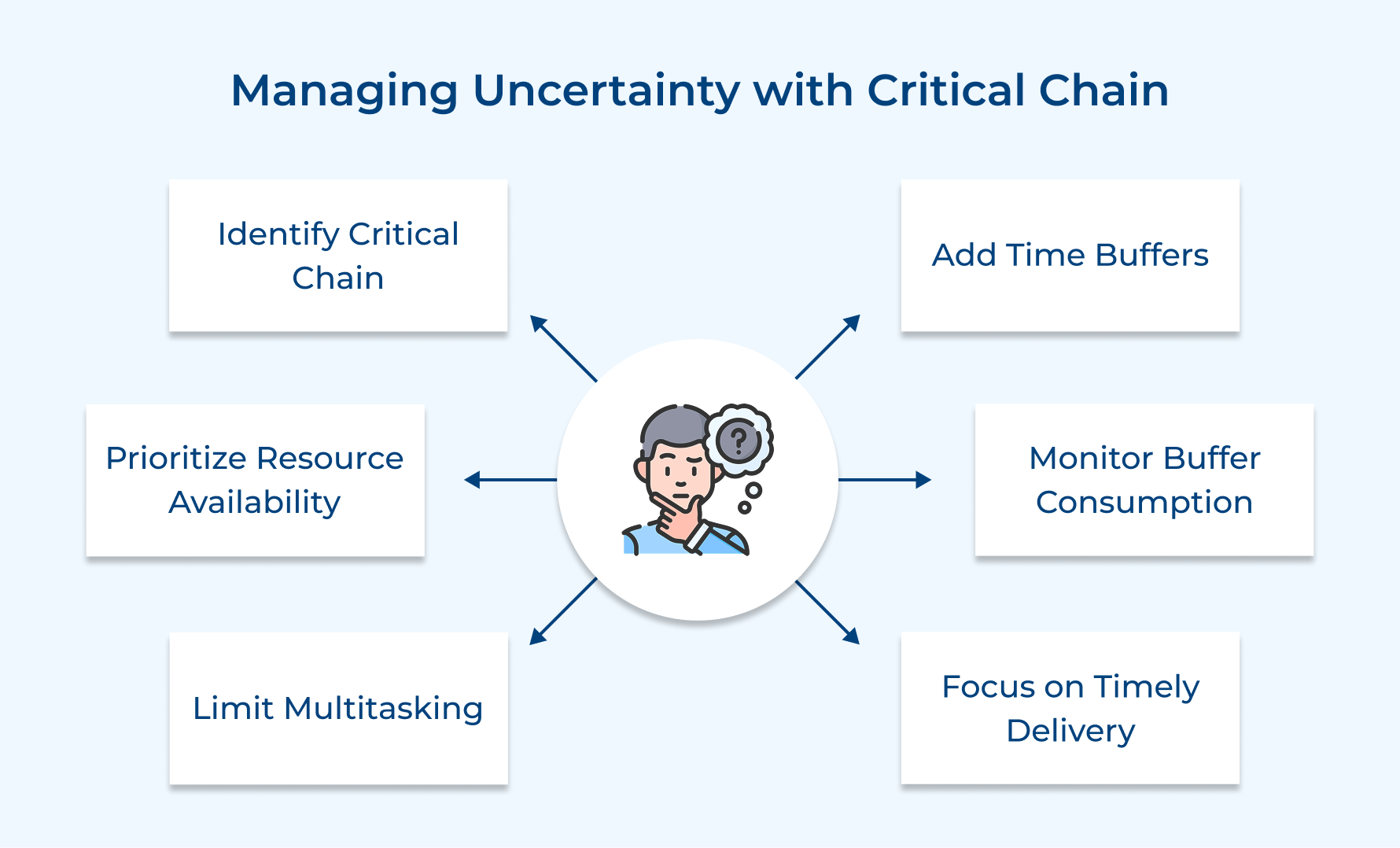Project Management Methodology: Types, Examples & Frameworks

Key Highlights:
- Choose project management methodologies like Agile, Scrum, or Waterfall based on project complexity and organizational goals.
- Align project methodology with time, budget, and customer value, balancing flexibility as well as stakeholder collaboration.
- Use structured frameworks to ensure quality, mitigate risks, optimize resources, and align stakeholders for successful project delivery.
Managing a project can feel like a juggling act, especially with so many methodologies out there claiming to be the key to success. Without the right framework, projects can quickly spiral into delays, miscommunication, and missed goals—it’s frustrating, to say the least.
Picking the wrong project management approach? That’s like trying to solve a puzzle with the wrong pieces. Even the most carefully planned projects can struggle if the methodology doesn’t fit.
Let’s break down the top project management methodologies while diving into what makes each one tick, so you can find the perfect match for smoother workflows and better communication. Let’s get started!
What is a Project Management Methodology?
A project management methodology is a structured framework of principles used to initiate, execute and close projects. It provides a systematic approach that defines how projects should be managed from start to finish, establishing standardized processes, tools, and templates to guide project teams toward successful outcomes.
Adopting a defined methodology ensures that all team members follow a uniform approach while ensuring that each phase of the project is properly executed. It also helps teams stay organized as well as address issues proactively, increasing the chances of delivering the project on time and within budget.
Key objectives:
- Quality assurance – Establishing standardized processes and checkpoints to ensure deliverables meet predetermined quality standards.
- Risk mitigation – Identifying potential obstacles early and implementing proactive measures to minimize their impact on project success.
- Resource optimization – Efficiently allocating as well as managing human, financial, and material resources to maximize productivity.
- Stakeholder alignment – Creating clear communication channels and expectations to keep all parties informed as well as working toward common goals.
15 Types of Project Management Methodologies
When it comes to managing projects effectively, choosing the right framework is crucial. Here’s a rundown of 15 popular project management methodologies to help you find the perfect fit for your team.
1. Agile Methodology
Agile is all about flexibility and adaptability. It’s an approach to project management that breaks a project into smaller, manageable chunks, making it easier to tweak things as you go.
While it’s super popular in software development, you can actually use it in all kinds of industries. The idea is to deliver these small pieces step by step, get feedback at every stage, and adjust quickly to any changes or new requirements along the way.
Core Principles:
- Iterative and Incremental: Agile projects are divided into small iterations (or “sprints”) that last from one to four weeks, allowing for constant adjustments.
- Collaboration: Emphasizes close collaboration with stakeholders, including regular feedback to ensure alignment with business goals.
- Customer focus: Prioritizes customer needs, with regular updates to ensure the product aligns with customer expectations.
Best For: Projects with unclear or evolving requirements, like software development, product design, or startups that need flexibility.
Key Frameworks:
- Scrum: A popular Agile framework that focuses on sprints, defined roles (Scrum Master, Product Owner), and ceremonies (e.g., Daily Standups, Sprint Retrospectives).
- Kanban: A visual workflow management system that helps agile teams manage tasks continuously.
- Extreme Programming (XP): A framework emphasizing engineering practices and close collaboration with the client.
2. Waterfall Methodology
Waterfall is a traditional, linear project methodology where each phase of the project must be completed before moving to the next. It is structured and highly sequential, making it easier to follow but less adaptable to changes once the project has begun.
Core Principles:
- Sequential process: The project progresses through well-defined stages: Requirements, Design, Implementation, Testing, Deployment, and Maintenance.
- Fixed scope and timeline: Waterfall projects have a defined scope from the start, and changes are difficult to incorporate once the project is underway.
- Documentation: Each phase requires extensive documentation, ensuring clear communication and accountability.
Best For: Projects with well-understood, fixed requirements and minimal changes, such as construction, manufacturing as well as some government projects.
Pros & Cons:
- Pros: Clear milestones and deliverables; easier to manage as well as document.
- Cons: Not adaptable to changes during the project lifecycle; issues may only surface late in the process.
3. Scrum (Agile Framework)
Scrum is a specific framework within the Agile methodology that focuses on structured roles, events, and artifacts to manage work in time-boxed sprints. Scrum emphasizes teamwork, accountability, and continuous improvement.
Core Principles:
1. Roles: Scrum defines specific roles:
- Product Owner: Manages the product backlog, and prioritizes work.
- Scrum Master: Facilitates the Scrum process, and removes obstacles.
- Development Team: Self-organizing group responsible for executing the work.
2. Sprints: Time-boxed periods (usually 2-4 weeks) during which a specific set of features or tasks is completed.
3. Scrum Ceremonies: Regular events like Sprint Planning, Daily Standups, Sprint Reviews, and Sprint Retrospectives.
Best For: Complex projects where requirements change frequently or need to evolve rapidly, such as software development, product innovation, along with tech startups.
Example: A software company using Scrum to build a new app, with regular feedback from users integrated into each sprint.
4. Kanban
Kanban is a visual project management system that emphasizes continuous flow, flexibility, and limiting work in progress (WIP). It allows teams to visualize the work process and improve efficiency by optimizing workflows.
Core Principles:
- Visual boards: Kanban boards are divided into columns that represent various stages of the work process (e.g., To Do, In Progress, Done).
- Work-in-progress (WIP) limits: Limits are set on how many tasks can be in each stage at any given time to prevent bottlenecks.
- Continuous delivery: Focuses on delivering small batches of work continuously rather than in large chunks or sprints.
Best For: Projects with ongoing tasks, such as customer service teams, content creation, or operational work that requires constant flow (e.g., support tickets or marketing content).
Example: A marketing team using Kanban to manage the flow of content creation from idea generation to final approval.
5. Lean Project Management
Lean focuses on maximizing value while minimizing waste. Lean methodologies originated in the manufacturing industry but have been applied to others to improve efficiency and reduce costs.
Core Principles:
- Eliminate waste: Focuses on identifying and removing non-value-adding activities (e.g., delays, excess inventory).
- Optimize processes: Aims for continuous improvement through methods like Kaizen (small, incremental improvements).
- Maximize value: Ensures that resources are used effectively to create the highest possible value for the customer.
Best For: Projects that require process optimization, efficiency improvements, or cost reduction, such as in manufacturing/product development.
Example: A car manufacturer using Lean principles to streamline its production line, reduce defects, and improve delivery times.
6. PRINCE2 (Projects IN Controlled Environments)
PRINCE2 is a structured project management methodology with a focus on clearly defined roles, stages, and processes. It is process-driven and emphasizes documentation as well as control.
Principles:
- Structured approach: Divide the project into manageable stages, each with clear goals and deliverables.
- Roles and responsibilities: Defines specific roles (e.g., Project Manager, Team Manager, Stakeholders) with clearly allocated responsibilities.
- Continuous business justification: Ensures that the project remains aligned with business objectives and provides regular checkpoints for justification.
Best For: Large-scale, complex projects with multiple stakeholders and a need for strict governance, such as government projects, IT implementations, infrastructure projects, etc.
Pros & Cons:
- Pros: Highly structured, detailed planning, great for large teams or complex projects.
- Cons: Can be overly bureaucratic for smaller or less complex projects.
7. Critical Path Method (CPM)
CPM is all about pinpointing the critical tasks that directly impact how long a project will take. It’s a handy tool for scheduling while managing resources, especially in complex projects where tasks are closely connected and depend on each other.
Core Principles:
- Critical path: The longest sequence of tasks in a project that must be completed on time for the entire project to finish on schedule.
- Task dependencies: Identifying which tasks depend on others and scheduling accordingly.
- Resource management: Optimizing the use of resources (e.g., personnel, equipment) to avoid delays.
Best For: Large projects with interdependent tasks as well as tight deadlines, such as construction, engineering, and large-scale event planning.
Example: A construction company using CPM to map out the construction timeline, ensuring that critical tasks like laying the foundation are completed before starting the superstructure.
8. Six Sigma
Six Sigma is a data-driven methodology focused on improving quality and reducing defects in processes. It uses statistical tools and techniques to measure as well as control variability.
Core Principles:
- DMAIC (Define, Measure, Analyze, Improve, Control): A five-phase process for improving existing processes.
- Data-driven decisions: Decisions are based on quantitative data and statistical analysis.
- Continuous improvement: Focuses on incremental improvements to eliminate defects and improve efficiency.
Best For: Process improvement and quality control in industries like manufacturing, healthcare, service sectors, etc.
Example: A manufacturer using Six Sigma to reduce defects in their product line and increase production efficiency.
9. Adaptive Project Framework (APF)
The Adaptive Project Framework (APF) is one of the flexible project management methods that emphasizes adaptability to changing requirements and project conditions.
Core Principles:
- Flexibility: Encourages ongoing evaluation and adaptation to project changes.
- Iterative progress: Projects evolve in phases, allowing for recalibration as necessary.
- Customer collaboration: Regular feedback from clients and stakeholders is integrated into the process.
Best For: Projects with uncertain or evolving requirements, such as research and development or highly innovative projects.
10. Hybrid Project Management
Hybrid methodologies combine elements of multiple project management approaches (e.g., Agile and Waterfall) to suit specific project needs. It enables teams to be flexible and use the best practices from various methods.
Core Principles:
- Customization: Tailoring methodologies to the unique needs of the project.
- Combination of structure and flexibility: Uses structured processes for some parts of the project (e.g., planning) and Agile techniques for others (e.g., execution).
- Adaptability: Teams can switch between different approaches based on the phase or complexity of the project.
Best For: Complex, multi-phase projects that require both flexibility and structured planning, such as large-scale IT deployments or organizational transformation projects.
Example: A software company using Waterfall for the planning phase and Agile for the development phase of a product launch.
11. Critical Chain Project Management (CCPM)
Critical Chain Project Management (CCPM) is an extension of the Critical Path Method (CPM) that focuses on resource constraints and project buffers. Designed to handle project uncertainties, CCPM addresses potential delays before they impact the project timeline.
Core Principles:
- Critical chain: Identifying the longest path in a project considering both task dependencies and resource limitations.
- Buffer management: Adding time buffers to project schedules to account for potential delays, particularly in tasks or resources that are most likely to cause delays.
- Focus on resources: Unlike CPM, which focuses on task dependencies alone, CCPM gives equal importance to resource constraints and ensures that resources are available when needed.
Best For: Projects with resource constraints and high levels of uncertainty (e.g., complex product development, construction projects with tight resource management).
Example: A tech company using CCPM to develop a new product where limited resources (e.g., key engineers) are shared across multiple projects.
12. PRiSM (Projects integrating Sustainable Methods)
PRiSM is a project management methodology focused on sustainability and integrating environmental considerations into every phase of the project lifecycle. It is designed to ensure that sustainability goals are prioritized alongside traditional project objectives such as time, cost, and quality.
Core Principles:
- Sustainability focus: Integrates sustainability throughout the project, from planning to execution and closure.
- Green project management: Incorporates environmental, economic, and social impacts into decision-making processes.
- Lifecycle thinking: Encourages evaluating the entire lifecycle of a product, service, or project to identify sustainable alternatives.
Best For: Projects that require a strong focus on sustainability, such as construction, infrastructure projects, or environmental initiatives.
Example: A construction company using PRiSM to manage the design and construction of a green building, ensuring that sustainable materials as well as energy-efficient methods are us
13. Value-Driven Project Management (VDPM)
VDPM focuses on maximizing the value delivered by a project rather than just focusing on completing tasks on time and within budget. It involves aligning project activities with the overall strategic goals of the organization to ensure that the project delivers the highest possible value.
Core Principles:
- Value maximization: Prioritizes activities that contribute directly to the project’s value to the organization, such as customer satisfaction, business outcomes, and long-term benefits.
- Continuous assessment: Constantly reassessing project goals and progress to ensure that resources are being allocated efficiently as well as are focused on delivering value.
- Stakeholder engagement: Involves regular communication with stakeholders to ensure alignment with their needs and expectations.
Best For: Projects that need to focus on delivering strategic outcomes rather than just meeting deadlines and budgets, such as organizational change initiatives, business transformation projects, or customer experience improvements.
Example: A consulting firm working on a business transformation project for a client, using VDPM to focus on delivering value in terms of improved business processes and customer satisfaction.
14. Rapid Application Development (RAD)
Rapid Application Development (RAD) is a software development methodology that emphasizes quick development and iteration through prototyping as well as user feedback. The goal is to produce functional software in a very short period of time by leveraging fast prototyping and user involvement.
Core Principles:
- Prototyping: RAD emphasizes the creation of prototypes rather than detailed documentation. Early prototypes are developed, reviewed, and refined iteratively.
- User feedback: User input is gathered frequently during the development process, allowing for rapid changes and improvements.
- Time-boxed phases: The project is divided into shorter phases that include design, development, and testing, all aimed at speeding up the time to delivery.
- Iterative process: Instead of long cycles of design and coding, RAD emphasizes frequent releases/continuous feedback, allowing for fast iteration as well as refinement.
Best For: Projects that require rapid development, especially when the end-user’s requirements are expected to evolve quickly. Typically used in software development, especially for web applications or systems that need to be delivered quickly and with frequent adjustments.
Example: A financial services company needing a quick, interactive software solution for tracking transactions and reports, using RAD to quickly prototype as well as refine the system with stakeholder feedback.
15. Extreme Programming (XP)
Extreme Programming (XP) is an Agile software development methodology that aims to improve software quality and responsiveness to changing customer requirements. It focuses on technical excellence, continuous feedback, and frequent releases, making it suitable for high-risk as well as dynamic environments.
Core Principles:
- Pair programming: Two developers work together on the same code, improving code quality and building collaboration.
- Test-driven development (TDD): Writing tests before writing code ensures that each part of the system is thoroughly tested from the start.
- Continuous integration: Code is integrated and tested continuously, minimizing the risk of integration problems while ensuring frequent delivery of working software.
- Refactoring: XP emphasizes code simplicity and continuous improvement. Code is constantly refactored to keep it clean, maintainable, as well as efficient.
- Customer Involvement: The customer is involved throughout the development process, ensuring that the software is aligned with user needs and priorities.
- Small Releases: Software is delivered in small, manageable increments, allowing for quick delivery and immediate feedback.
Best For: Projects that require high levels of collaboration, frequent changes, and robust testing, typically used in software development for fast-paced, high-risk projects with evolving requirements.
Example: A software startup developing a highly dynamic platform for social networking, using XP to ensure rapid delivery of features with robust testing, and continuously refining the code based on user feedback.
How To Choose a Project Management Methodology?
Choosing the right project management methodology is key to ensuring your project runs smoothly. With so many options available, it’s important to find one that aligns with your team’s needs.
1. Assess the Degree of Project Complexity
Project complexity refers to the number of variables, interdependencies, and unknowns that a project has. The more complex the project, the more structured and robust the methodology needs to be to manage these complexities.
- Low complexity: If the project has a well-defined scope and minimal uncertainty, simpler methodologies like Waterfall or Kanban might be the best choice.
- High complexity: For projects with a high degree of complexity, such as those with uncertain requirements or multiple stakeholders, methodologies like Agile, Scrum, Lean, or PMBOK (Project Management Body of Knowledge) are better suited.
2. Consider the Project Type and Industry
The industry and type of project often dictate the methodology best suited for managing it. Different industries may require different approaches to project execution.
- Software development: For software or tech projects, Agile-based methodologies like Scrum, Extreme Programming (XP), Kanban, or Feature-Driven Development (FDD) are commonly used because they support iterative development.
- Construction and engineering: Traditional methodologies like Waterfall, Critical Path Method (CPM), or PRiSM (Projects integrating Sustainable Methods) are often more appropriate for construction or engineering projects where scope, timelines, and budget are more rigid.
- Research and development (R&D): For R&D projects, where requirements and results are uncertain, Lean, Adaptive Lifecycle, or Agile approaches may be better, as they allow for flexibility as well as iterative testing.
3. Evaluate Team Size and Skillset
The size and skill set of your project team plays a crucial role in choosing a methodology. Smaller teams can thrive with methodologies that emphasize direct collaboration and flexibility, while larger teams may need more structured approaches.
- Small teams: For smaller, cross-functional teams, methodologies like Scrum, Kanban, or Design Thinking offer flexibility and efficient communication without the need for extensive documentation.
- Large teams: If the project involves multiple departments or large teams, methodologies like PMBOK, Scaled Agile Framework (SAFe), or Waterfall provide structure, clear roles, and detailed planning to ensure coordination among large groups.
- Team skillset: Teams with high technical skills (e.g., in software development) may benefit from methodologies like Extreme Programming (XP) or Feature-Driven Development (FDD), while teams with limited technical expertise may find traditional approaches like Waterfall or PRiSM easier to follow.
4. Alignment with Organizational Goals
Your organization’s goals should align with the methodology you choose. Some organizations prioritize speed along with flexibility, while others focus on structure, control, and governance.
- Agile & lean: Organizations that emphasize innovation, quick adaptation to market changes, and frequent customer feedback might prefer Agile, Scrum, or Lean, which provide continuous iteration.
- Waterfall & PMBOK: Organizations that prioritize consistency, risk management, and detailed documentation may lean towards more traditional methodologies like Waterfall or PMBOK, which offer comprehensive planning and control processes.
- Sustainability or Compliance-focused: For organizations that prioritize sustainability or regulatory compliance, PRiSM (Projects integrating Sustainable Methods) could be a strong choice, as it integrates sustainable practices throughout the project lifecycle.
5. What Delivers the Most Value
The value delivered to the customer or end-user is a key consideration when selecting a methodology. Some methodologies focus on maximizing value through rapid delivery, while others focus on delivering high-quality results in a well-structured manner.
- Agile & Lean: These methodologies excel at delivering value through frequent iterations and responsiveness to customer feedback. They are well-suited to projects where end-users’ needs may evolve throughout the project lifecycle.
- Waterfall & PRiSM: These methodologies, while more rigid, can also deliver significant value when projects require high levels of documentation, adherence to specifications, or compliance with regulatory standards.
- Design Thinking: If the project involves creating user-centric solutions or products, design thinking can deliver immense value by focusing on empathy, rapid prototyping, and testing with real users.
6. Time and Budget Constraints
Time and budget constraints are critical factors in selecting the right methodology. Some methodologies are better suited for projects with tight deadlines and limited budgets, while others provide more flexibility but require more resources.
- Tight timeframe & budget: If the project must be completed within strict deadlines and financial constraints, methodologies like Kanban, Scrum, Lean, or Rapid Application Development (RAD) work well.
- Flexible timeframe & budget: If you have more flexibility with time and budget, more comprehensive methodologies like PMBOK, Waterfall, or PRiSM might be appropriate. These methodologies require more planning and documentation upfront but are ideal when delivering a complete, polished final product is important.
Maximize Efficiency with the Right PM Methodology
Choosing the right project management methodology is crucial for project success, but it’s not a one-size-fits-all decision. The key is to thoroughly evaluate your project’s unique characteristics, team dynamics, organizational culture, and specific requirements.
Whether you opt for Agile’s flexibility, Waterfall’s structure, or a hybrid approach, remember that the methodology should serve your project’s goals, not constrain them. Stay flexible, be willing to adapt, and focus on delivering value.
Regular assessment and adjustment of your chosen methodology will ensure continued effectiveness as your project evolves.
Limit time — not creativity
Everything you need for customer support, marketing & sales.
Neeti Singh is a passionate content writer at Kooper, where he transforms complex concepts into clear, engaging and actionable content. With a keen eye for detail and a love for technology, Tushar Joshi crafts blog posts, guides and articles that help readers navigate the fast-evolving world of software solutions.



